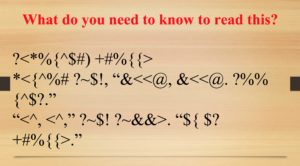In class a couple weeks ago we started to have a discussion on TEI and XML. At the start of this conversation I had no idea what those acronyms stood for or what they meant. I came to learn that TEI stands for Text Encoding Initiative and XML stands for eXtensible Markup Language. Even after learning what these acronyms stand for I still don’t really understand what they mean or why they are important. We started talking about how TEI and XML add a rigorous structure to data and they take the shape of a tree, like a hierarchy. I still don’t completely understand what this means, but I found a connection between this and my Literacy Education course I’m taking this semester. We discussed how our ebooks and books in general also take the structure of a tree. The title could be seen as the trunk because it’s the base of what you’ll read later on and then as you go up the tree things get smaller such as the paragraphs, sentences, words, and individual letters. We also have to take into account the punctuation, spacing, and all individual bits of data. While creating our ebooks it’s important to represent that data and be able to recognize it. I found a relation between this and my literacy course because on the first day of class the professor showed us a picture of a bunch of symbols and asked “What do you need to know in order to read this?”
Some of the answers that we came up with were what each symbol stands for, what sound is associated with each symbol, what the difference between one symbol and two of the same symbols together sound like, and you have to read left to right. There are five pillars of early literacy that are essential to learn in order to be successful in reading and writing. They are: phonological awareness, phonics, fluency, vocabulary, and comprehension. In my literacy course we focused on phonological awareness and phonics. Phonological awareness is the general appreciation of how language can be divided into its components. For example, we speak in sentences. Sentences can be broken down into words and words into syllables. Just like TEI and XML having its own bits of data that people have to recognize and understand to be successful, children have to recognize and understand the small bits of language in order to read and write.

